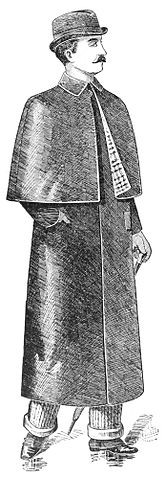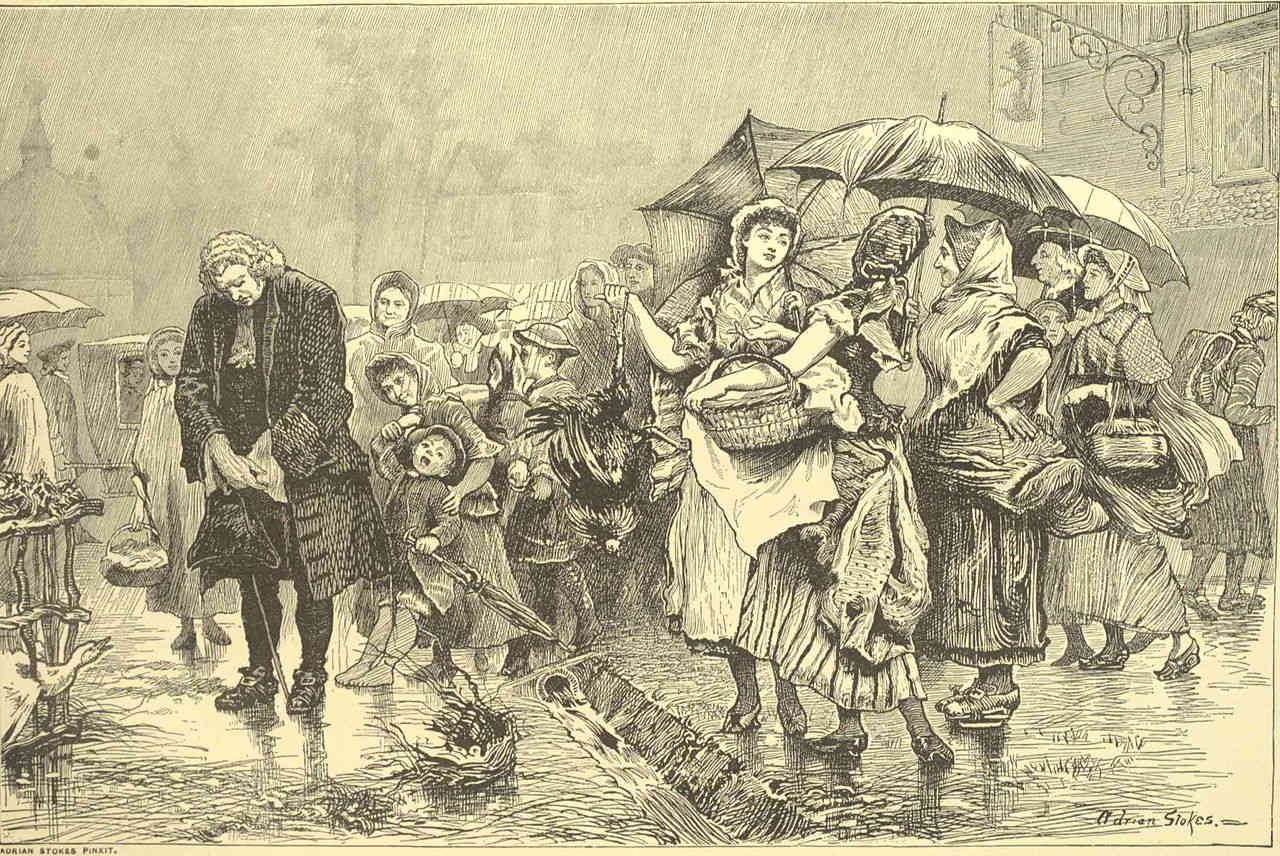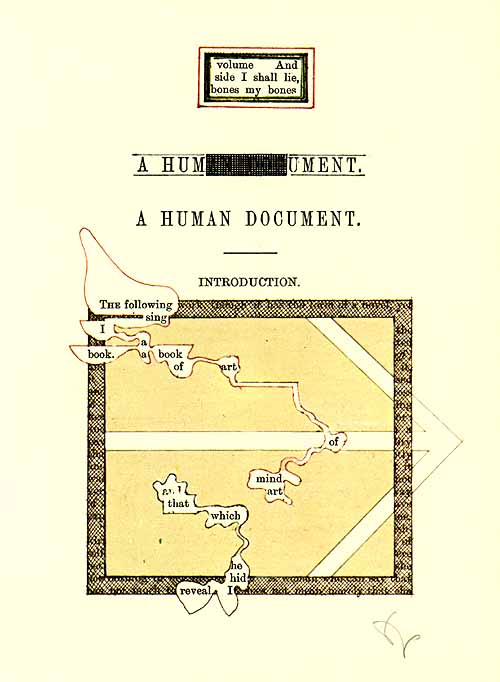any-lengthian
adj. unscrupulous
anythingarianism
n. the fact or phenomenon of not holding any fixed or established beliefs
any-lengthian
adj. unscrupulous
anythingarianism
n. the fact or phenomenon of not holding any fixed or established beliefs
Created by Franz Armbruster in 1967, “Instant Insanity” was the Rubik’s Cube of its day, a simple configuration task with a dismaying number of combinations. You’re given four cubes whose faces are colored red, blue, green, and yellow:

The task is to arrange them into a stack so that each of the four colors appears on each side of the stack. This is difficult to achieve by trial and error, as the cubes can be arranged in 41,472 ways, and only 8 of these give a valid solution.
One approach is to use graph theory — draw points of the four face colors and connect them to show which pairs of colors fall on opposite faces of each cube:

Then, using certain criteria (explained here), we can derive two directed subgraphs that describe the solution:

The first graph shows which colors appear on the front and back of each cube, the second which colors appear on the left and right. Each arrow represents one of the four cubes and the position of each of the two colors it indicates. So, for example, the black arrow at the top of the first graph indicates that the first cube will have yellow on the front face and blue on the rear.
This solution isn’t unique, of course — once you’ve compiled a winning stack you can rotate it or rearrange the order of the cubes without affecting its validity. B.L. Schwartz gives an alternative method, through inspection of a table, as well as tips for solving by trial and error using physical cubes, in “An Improved Solution to ‘Instant Insanity,'” Mathematics Magazine 43:1 (January 1970), 20-23.

“If you have an apple and I have an apple and we exchange apples then you and I will still each have one apple. But if you have an idea and I have an idea and we exchange these ideas, each of us will have two ideas.” — George Bernard Shaw
“He who receives an idea from me, receives instruction himself without lessening mine; as he who lights his taper at mine, receives light without darkening me. That ideas should freely spread from one to another over the globe, for the moral and mutual instruction of man, and improvement of his condition, seems to have been peculiarly and benevolently designed by nature, when she made them, like fire, expansible over all space, without lessening their density in any point.” — Thomas Jefferson

The end of the Civil War opened a new era of fossil hunting in the American West — and a bitter feud between two rival paleontologists, who spent 20 years sabotaging one another in a constant struggle for supremacy. In this week’s episode of the Futility Closet podcast we’ll tell the story of the Bone Wars, the greatest scientific feud of the 19th century.
We’ll also sympathize with Scunthorpe and puzzle over why a driver can’t drive.

I just ran across this, offered by Morton C. Schwartz in an old issue of Pi Mu Episilon Journal:
Take any number of zeros and any number of ones and place them in a circle, in any order. Reproduce the circle a second time, concentrically with the first. Rotate either circle, and any number of places. The number of zeros opposite ones will always be even.
(Morton C. Schwartz, “An Amazing Parity Theorem,” Pi Mu Episilon Journal 5:7 [Fall 1972], 338.)
https://www.youtube.com/watch?v=KcidhLw94_k
Cape Town artist Philip Barlow depicts “out-of-focus” cityscapes and beach scenes in oil paints. In photography this effect is known as bokeh, the blurring of elements that lie outside the depth of field. Others have said that Barlow renders the world as it might appear to a near-sighted person.
In this sense the subjects of his paintings are not the objects they depict but rather light itself. “The figures in the landscape serve as carriers and reflectors of the light that falls upon them. Bathed in the luminosity, it is my hope that they would become more beautiful. To me, light is the ultimate subject because it embodies the pinnacle of all reality.”

In James Joyce’s Ulysses, as Bloom attends Dignam’s funeral, an odd thought passes through his mind: “Now who is that lankylooking galoot over there in the macintosh? Now who is he I’d like to know? Now, I’d give a trifle to know who he is. Always someone turns up you never dreamt of.” The interloper’s presence seems significant: “Mr Bloom stood far back, his hat in his hand, counting the bared heads. Twelve. I’m thirteen. No. The chap in the macintosh is thirteen. Death’s number. Where the deuce did he pop out of? He wasn’t in the chapel, that I’ll swear. Silly superstition that about thirteen.”
He turns up again later: “In Lower Mount street a pedestrian in a brown macintosh, eating dry bread, passed swiftly and unscathed across the viceroy’s path.”
And still later: “A man in a brown macintosh springs up through a trapdoor.”
Altogether the mysterious man is mentioned 11 times in the novel. In the Cyclops episode we’re told, “The man in the brown macintosh loves a lady who is dead,” and in Ithaca, a catechism of questions and answers, we’re asked, “What selfinvolved enigma did Bloom risen, going, gathering multicoloured multiform multitudinous garments, voluntarily apprehending, not comprehend? Who was M’Intosh?”
The question has never been answered definitively. But in his Cornell University lectures on Ulysses, Vladimir Nabokov suggested that the “chap in the macintosh” is none other than James Joyce himself. In the library episode, “Scylla and Charybdis,” Stephen Dedalus explains that Shakespeare “has hidden his own name, a fair name, William, in the plays, a super here, a clown there, as a painter of old Italy set his face in a dark corner of his canvas.” This “is exactly what Joyce has done — setting his face in a dark corner of his canvas. The Man in the Brown Macintosh who passes through the dream of the book is no other than the author himself. Bloom glimpses his maker!”
Churchill himself is a talented heckler. Sir William Joynson-Hicks was making a speech before Commons and noticed Churchill shaking his head so vigorously that attention was distracted from the address. ‘I see my right honourable friend shaking his head,’ cried Joynson-Hicks with exasperation. ‘I wish to remind him that I am only expressing my own opinion!’
‘And I wish to remind the speaker that I am only shaking my own head,’ replied Churchill.
— Brisbane Courier-Mail, 1952

During the last visit which [Samuel Johnson] made to Lichfield [in 1781], the friends with whom he was staying missed him one morning at the breakfast-table. On inquiring after him of the servants, they understood he had set off from Lichfield at a very early hour, without mentioning to any of the family whither he was going. The day passed without the return of the illustrious guest, and the party began to be very uneasy on his account, when, just before the supper-hour, the door opened, and the Doctor stalked into the room. A solemn silence of a few minutes ensued, nobody daring to inquire the cause of his absence, which was at length relieved by Johnson addressing the lady of the house in the following manner: ‘Madam, I beg your pardon for the abruptness of my departure from your house this morning, but I was constrained to it by my conscience. Fifty years ago, madam, on this day, I committed a breach of filial piety, which has ever since lain heavy on my mind, and has not till this day been expiated. My father, you recollect, was a bookseller, and had long been in the habit of attending market, and opening a stall for the sale of his books during that day. Confined to his bed by indisposition, he requested me, this time fifty years ago, to visit the market, and attend the stall in his place. But, madam, my pride prevented me from doing my duty, and I gave my father a refusal. To do away the sin of this disobedience, I this day went in a post-chaise to Uttoxeter, and going into the market at the time of high business, uncovered my head, and stood with it bare an hour before the stall which my father had formerly used, exposed to the sneers of the standers-by and the inclemency of the weather; a penance by which I trust I have propitiated Heaven for this only instance, I believe, of contumacy toward my father.’
— Richard Warner, A Tour Through the Northern Counties of England, 1802
The act is commemorated today in the Johnson Memorial, which stands in the Market Place, in the town center.

To create his 1970 novel A Humument, British artist Tom Phillips began with W.H. Mallock’s forgotten 1892 novel A Human Document and drew, painted, and collaged over the pages, leaving a few words showing to tell a new, hitherto unrevealed story. For instance, the title arises from Phillips’ deletion of two central syllables in Mallock’s title, and the protagonist, Bill Toge, can appear only when the word “together” or “altogether” arises in Mallock’s original text.
Even this new text is evolving. Phillips has published five editions of the book, in each of which he replaces certain pages; eventually he hopes to replace every page, creating an entirely new work (or an entirely new version of the same work).
“Can we call what Phillips is doing ‘writing’, or would some other term be better?” asked Adam Smyth in the London Review of Books. “What version of authorship or creativity is at work here? A Humument is a reminder that books are inevitably intertextual — they grow out of older texts — and that all writing involves selecting words from a finite pool: what appears to be a constraint, having to work within the walls of an existing novel, in fact dramatises a condition of literature.”
The full text of the 1970 edition is here.